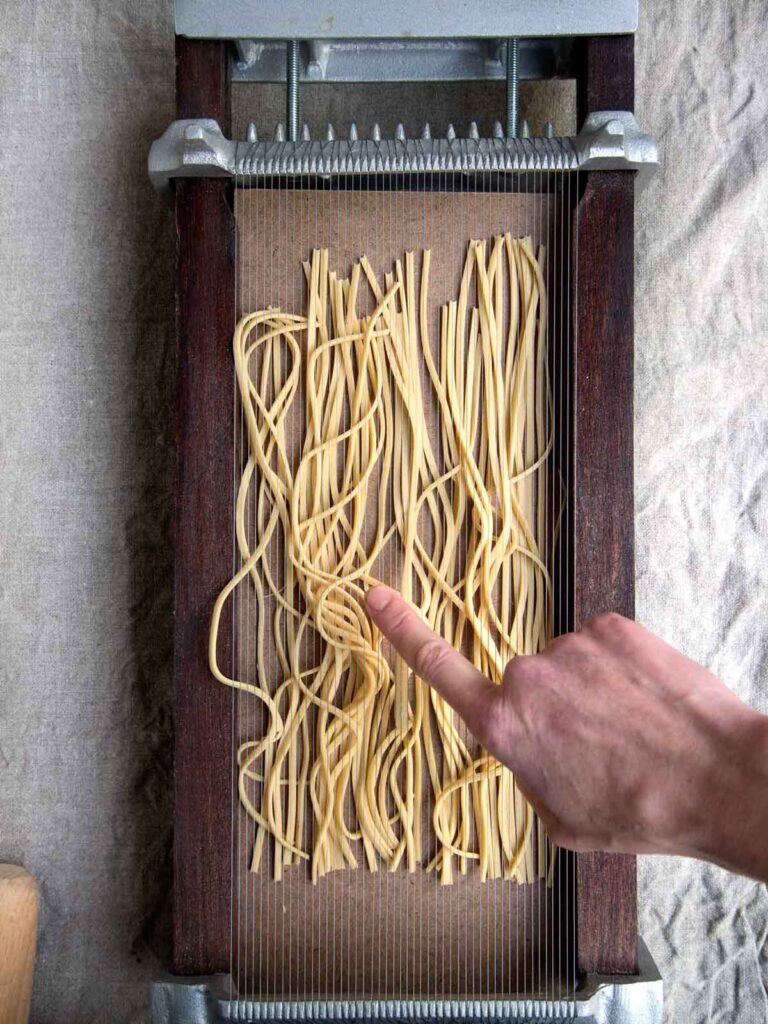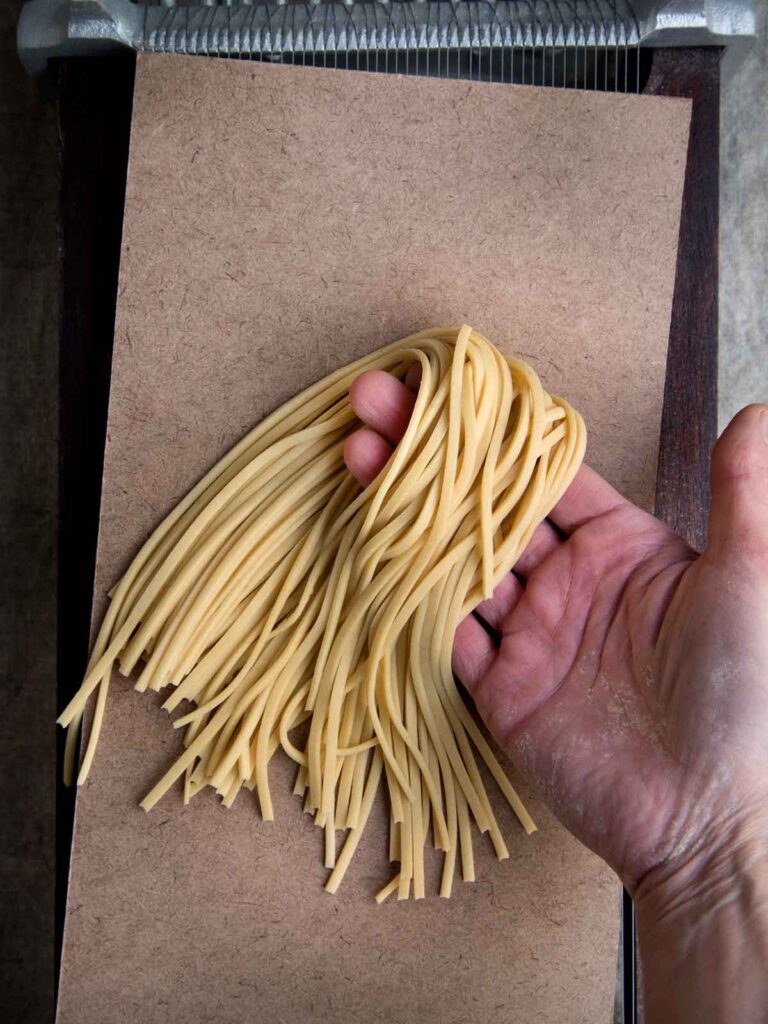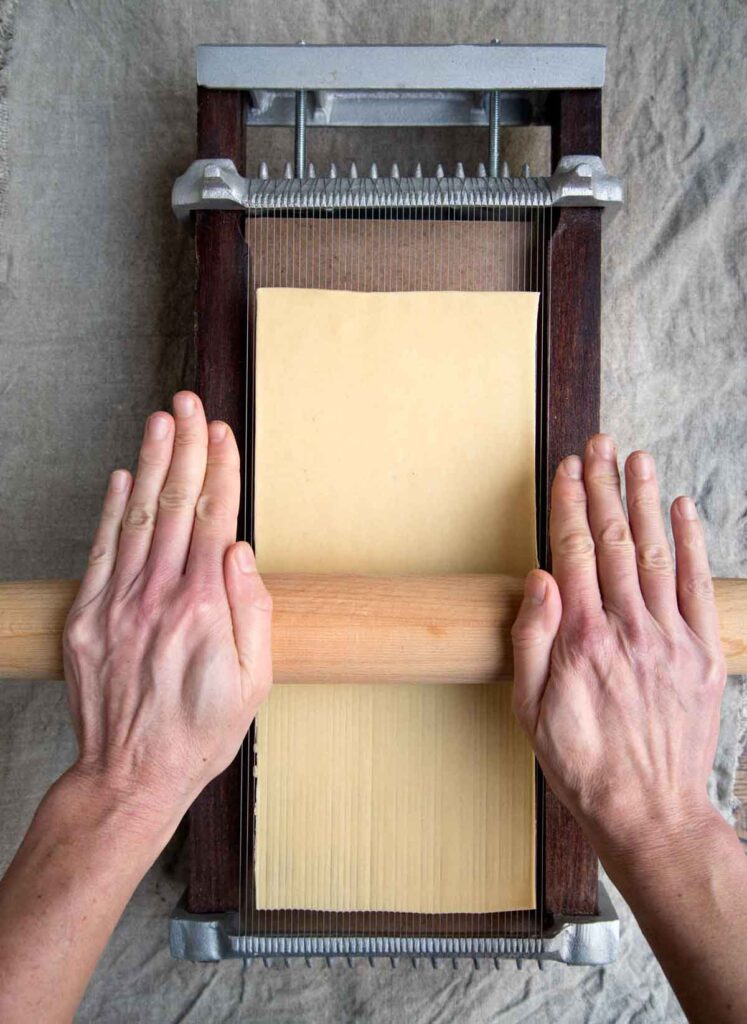This stringed instrument is known as a chitarra. The chitarra, which literally translates to ‘guitar’ in Italian, has strings like, you guessed it, a guitar and sings to you as you roll out the pasta. Of course, you don’t need a chitarra to make homemade spaghetti, but it’s a fun process nonetheless. And, really, can you have too many pasta gadgets? I think not.
The chitarra consists of a wooden frame strung with steel wires (like a guitar). One side is for making finer angel hair pasta or maccccheroni tutt’ova (the wires are spaced more closely together); the other side is for thicker spaghetti or macccheroni mezz’ovo (the wires are spaced further apart). Maccheroni alla chitarra is typical of the Abruzzo region of Italy; also referred to as tonnarelli in Lazzio, crioli in Molise and stringhetti in the Marche.
I love the thick, chewy noodle the chittara creates. This pasta is traditionally served with a mutton (sheep/lamb) ragú, though it’s equally good with your favorite tomato sauce.
For the dough (per person): 50 grams 00 flour plus 50 grams finely milled semolina plus 1 whole egg; just multiply this ratio depending on how many portions you want. The addition of semolina adds a bit more texture and chewiness to the noodle.
After mixing, kneading and resting (allow the dough to rest for 30 minutes) the dough, roll it out fairly thick (I rolled to #4 setting with my KitchenAid pasta roller attachment). Then place the sheet of pasta on the strings of the chitarra (I used the side that creates thicker strands). With a rolling pin, roll over the sheet of pasta. Under the uniform pressure of the rolling pin, the wire strings will cut the pasta and the strands will fall through, landing on the board below. With your fingers, you can stroke the strings and this will help any remaining strands fall through.
Here’s a short video I made of the process.



